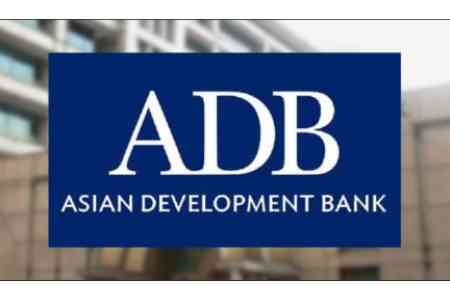


ArmInfo. The Asian Development Bank (ADB) forecasts a slight slowdown in Armenia's GDP growth in 2025 to 5% (down from the actual 5.9% in 2024) and further to 4.7% in 2026, as stated by the head of ADB in Armenia, Don Lambert, during a press conference on April 9.
According to the Bank's analysts, the main drivers of growth this year will be the services sector, with an projected growth of 6%, along with an increase in the sales volume of IT systems and services within this industry. He noted that the average annual inflation in 2025 will reach 3%, which corresponds to the target threshold (3%, +/- 1 p.p. - Ed.). Then in 2026, inflation, according to him, will be 2.8%. Lambert also emphasized that due to the decline in external demand in 2025, the current account deficit is expected to reach 5% of GDP. When asked about the risks associated with the projected economic growth by an ArmInfo correspondent regarding, the head of the Armenian office of ADB noted that they can be divided into several groups. He first pointed out the possibility of an unexpected increase in inflation, which will push rates up, affecting economic growth. Problems in the context of ensuring economic growth, according to the head of ADB, may also arise if the government, for some reason, does not make the planned investments in infrastructure. He also named the tense geopolitical conditions for Armenia, including factors such as the policy of the Russian Federation and the situation in the Middle East, from Iran to Palestine and Israel, as potential risk factors.
Additionally, Lambert added that the challenging economic situation, coupled with the import tariffs impose by US President Donald Trump, could potentially be an external factor influencing the growth of the Armenian economy. "And, of course, this will entail certain changes," said the head of the Bank in RA. Lambert, referring to ADB's assessment of how the tariff policy might impact the Armenian economy. He noted that the direct impact will be insignificant, since historically the United States has not been Armenia's main trading partner and its share in foreign trade turnover is insignificant. In addition, the tariff applicable to Armenia (base 10%) is considerably lower than that imposed on other countries.
The indirect impact, as he noted, is quite difficult to calculate and give an accurate assessment. Using the EU as an example, where Trump imposed a 20% import duty, Lambert merely noted that whatever impact this would have on the EU, the Armenian economy would also feel the same indirect impact.
Additionally, the head of the ADB noted that the probability of exploiting the Amulsar deposit was not considered when drawing up the forecast. Speaking about a further slowdown in Armenia's economic growth in 2026, Lambert said that this would be due to a reduction in public and private investment. He said that the next ADB forecast would be presented in September 2025. Let us recall that the Asian Development Bank (ADB) is Armenia's second largest creditor with a share of 21.2%. The bank has been working with Armenia since 2005. As of the end of 2024, ADB had implemented numerous projects in Armenia worth $1.9 billion, which were aimed at developing the transport, financial, energy and water sectors, and other infrastructure.